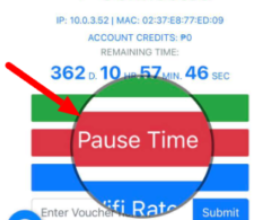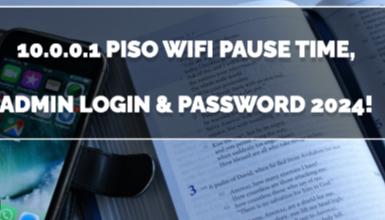Understanding the 10.0.0.1 Portal: A Complete Guide

Introduction
For network administrators, home users, or IT enthusiasts, the “10.0.0.1 portal” is an important gateway to configuring and managing network settings. It’s a common IP address used by many router brands to provide access to the administrative panel where users can control everything from security settings to Wi-Fi configurations. In this comprehensive guide, we will explain what the 10.0.0.1 portal is, how to access it, and what settings can be configured through it.
This article will also walk you through troubleshooting steps if you’re unable to access the 10.0.0.1 portal and offer tips to optimize your home or office network.
What is the 10.0.0.1 Portal?
The 10.0.0.1 portal refers to the administrative interface of a router, accessible through the IP address 10.0.0.1. This IP address is part of a private IP range commonly used by router manufacturers to allow users to access their device’s settings. It’s different from the public IP address used for connecting to the internet, as it’s only used for communication within a private network (your home or office LAN).
The 10.0.0.1 portal provides access to important features, such as:
Security configurations
Device management
Firmware updates
You can think of it as the control center for your network. It allows administrators to manage network performance, security, and configurations for connected devices.
How to Access the 10.0.0.1 Portal?
Accessing the 10.0.0.1 portal is straightforward. Follow these steps to log in and manage your network:
Steps to Access the Portal:
Connect to the Network: Ensure that your device is connected to the router’s network via Ethernet or Wi-Fi.
Open a Web Browser: Use any web browser (Chrome, Firefox, Safari) on your computer or mobile device.
Enter the IP Address: In the browser’s address bar, type “10.0.0.1” and press Enter.
Login: You will be prompted to enter the router’s username and password. This information is usually provided on a label on the router or in the user manual.
Access the Dashboard: Once logged in, you will have full access to the router’s settings and configurations.
Key Features of the 10.0.0.1 Portal
Once logged into the 10.0.0.1 portal, users are greeted with a variety of options to configure and manage their router. Here are some of the most important settings you can access:
1. Wi-Fi Settings
You can change your Wi-Fi network’s SSID (network name) and password. This is essential for securing your network and managing access to it.
2. Security Settings
Routers often provide various security protocols (like WPA2 or WPA3) that you can enable to safeguard your network. You can also create a guest network to separate untrusted devices from the main network.
3. Device Management
The portal allows you to see which devices are connected to your network and manage them. You can block specific devices or set bandwidth limits for better performance.
4. Firmware Updates
It’s important to regularly update your router’s firmware to ensure optimal performance and security. The 10.0.0.1 portal provides options to check for and install these updates.
5. Port Forwarding and QoS
Advanced users can set up port forwarding rules for specific devices and applications. Quality of Service (QoS) settings allow you to prioritize certain types of network traffic, such as gaming or streaming, to improve performance.
Common Issues and Troubleshooting for 10.0.0.1 Portal
While accessing the 10.0.0.1 portal is usually easy, users may occasionally run into problems. Here are common issues and how to fix them:
| Issue | Possible Solution |
| Cannot Access the Portal | Make sure your device is connected to the router’s network, either via Wi-Fi or Ethernet. Double-check that you are entering “10.0.0.1” correctly in the browser. Some routers might use a different IP address, like 192.168.1.1. |
| Forgot Router Username/Password | Check the default credentials on the router’s label or in the user manual. If the credentials were changed, you may need to reset the router to its factory settings. |
| Router Not Responding | Restart the router by unplugging it for 30 seconds and then plugging it back in. Check for any physical connection issues between the modem and the router. |
| Internet Connection Issues After Changes | If you experience internet problems after making changes in the 10.0.0.1 portal, revert to default settings or contact your ISP for guidance. |
| Slow Network Performance | Consider adjusting your QoS settings to prioritize important devices and applications. You can also try changing the Wi-Fi channel if you’re experiencing interference. |

Tips for Optimizing Network Performance Through the 10.0.0.1 Portal
The 10.0.0.1 portal not only helps in setting up the network but also provides tools to optimize its performance.
Here are some tips to get the best out of your router:
Update Firmware Regularly: Firmware updates not only provide security patches but also improve router performance. Check for updates regularly.
Choose the Right Wi-Fi Channel: If you live in an area with many Wi-Fi networks, try changing the Wi-Fi channel to reduce interference.
Use WPA3 for Better Security: If your router supports WPA3, switch to this protocol for stronger security.
Enable Guest Network: Keep visitors on a separate network to ensure your main network’s security and bandwidth aren’t compromised.
Set Up Parental Controls: Many routers allow you to set restrictions on websites or limit access to certain devices at specific times.
Conclusion
The 10.0.0.1 portal is a powerful tool for managing and optimizing your home or office network. Whether you need to adjust Wi-Fi settings, manage connected devices, or secure your network with advanced security protocols, the 10.0.0.1 interface provides the necessary tools. By following the steps outlined above and optimizing your router settings, you can ensure a faster, more secure, and more reliable network.




